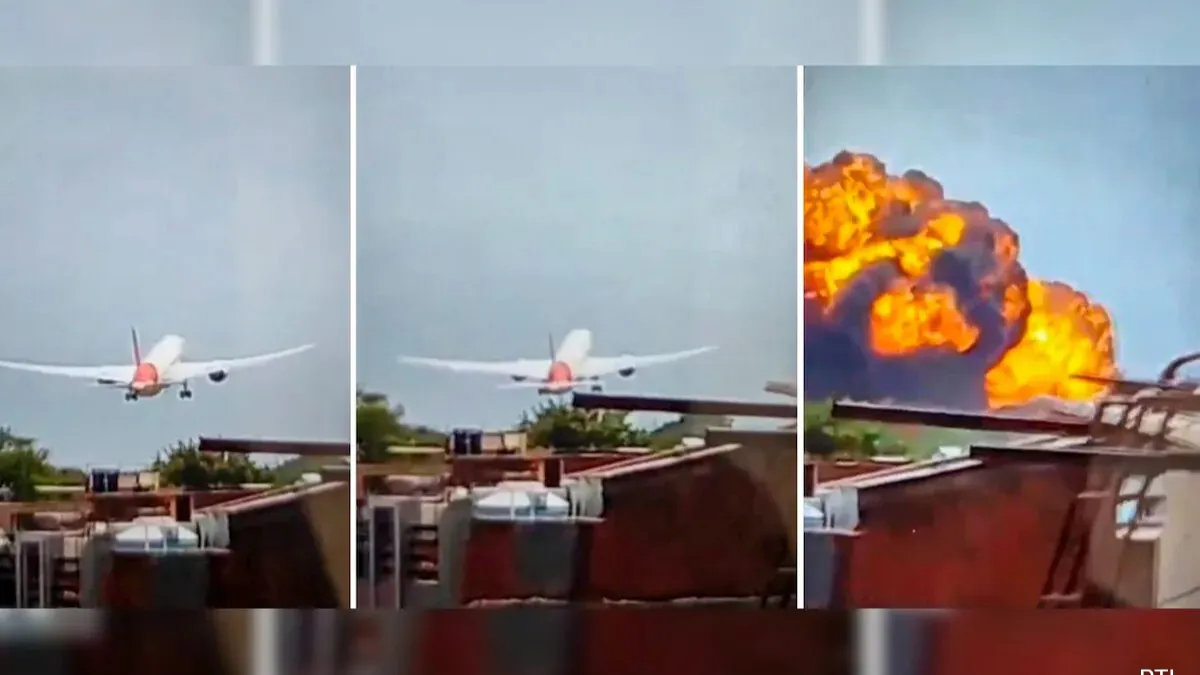A routine international flight turned into a national tragedy on Thursday afternoon when Air India Flight AI171, a Boeing 787-8 Dreamliner, crashed just moments after taking off from Ahmedabad’s Sardar Vallabhbhai Patel International Airport, killing all 241 passengers and crew onboard, as well as several people on the ground.
As the world watches, investigators from India, the U.S., and the U.K. are now working together to determine what exactly went wrong in the brief 30 seconds the aircraft was airborne.
A Tragic First for the Boeing 787-8
This is the first fatal crash involving a Boeing 787-8 Dreamliner since the aircraft entered commercial service in 2011. The incident has shocked aviation experts and raised urgent questions about safety, protocol, and possible technical failure.
The aircraft, piloted by Captain Sumeet Sabharwal and First Officer Clive Kundar, both seasoned professionals with over 9,000 flight hours between them, had been cleared for a long-haul journey to London Gatwick.
The Take-Off: Moments Before Disaster
The plane took off at 1:39 PM local time (08:09 GMT), carrying 100 tonnes of fuel—almost a full load, as per India’s Home Affairs Minister Amit Shah. Within seconds of lifting off, the crew issued a mayday call. No further communication was received afterward.
According to authenticated video footage, the plane struggled to gain height, climbing only to about 625 feet (190 meters) before beginning a slow descent and crashing into a densely populated residential area.
A survivor who miraculously lived through the crash reported hearing a loud bang and noticing the plane couldn’t maintain altitude.
Possible Causes Being Investigated
1. Double Engine Failure: A Rare Possibility
One of the most widely speculated causes is an extremely rare double engine failure. If both engines lost power, the pilots would have had virtually no time to react.
While such an event is nearly unheard of, it’s not impossible. Experts point to fuel contamination or clogging as possible causes. This would result in fuel starvation, which could shut down both engines.
The emergency Ram Air Turbine (RAT)—a backup system that supplies essential power—may have been deployed, though that has not been confirmed.
Still, aviation expert Mohan Ranganathan called such an event “very, very rare,” and GE Aerospace, the engine manufacturer, is sending a team to assist in the investigation.
2. Bird Strike: A Known Risk in Ahmedabad
Ahmedabad airport is notorious for bird activity. In fact, 462 bird strike incidents were reported in Gujarat over five years, with most occurring at this airport.
Birds ingested into engines—especially on take-off—can cause a dangerous loss of thrust. While most bird strikes are manageable, a strike to both engines can be catastrophic.
Given the low altitude of the crash, a severe bird strike at the wrong moment might have left pilots with no recovery window.
3. Flap Configuration Error: Human or Mechanical Fault?
Another theory being explored is whether the flaps—essential for generating lift during takeoff—were not properly extended. A fully loaded plane on a hot day needs significant lift to get airborne.
Ahmedabad recorded temperatures near 40°C (104°F) at the time, making the air thinner and reducing lift. If flaps weren’t set correctly, it could have seriously impacted take-off performance.
However, Boeing 787s are equipped with a configuration warning system, which would alert the pilots if flaps were improperly set. So, if this theory holds, it could point to either a technical failure of the alert system or a lapse in cockpit procedure.
Ex-pilot Marco Chan noted that a flap configuration error is possible, but highly unusual due to multiple pre-takeoff checklists.
What Happens Next?
Investigators will begin a detailed analysis of the flight data recorder (black box) and cockpit voice recorder, which are expected to provide critical information on what unfolded during those fateful seconds.
Boeing and Air India are cooperating fully with the investigation, and GE Aerospace will also assist in examining the engines and any possible faults.
Experts warn that it may take weeks or even months before a full, clear picture emerges.
Final Thoughts: A Wake-Up Call for Aviation Safety
Whether caused by rare mechanical failure, bird strike, or pilot error, the crash of Flight AI171 is a sobering reminder of how even routine flights can turn tragic in moments.
It also raises larger questions about air traffic safety in Indian airspace, wildlife management near airports, and the readiness of emergency protocols.
As the world mourns the loss of 241 lives, families and aviation authorities alike await answers. Only a thorough investigation will reveal the truth behind the crash of Air India’s Boeing 787 Dreamliner.
Frequently Asked Questions (FAQs)
Q1: Was this the first crash involving a Boeing 787 Dreamliner?
A: Yes, this is the first fatal crash of a Boeing 787-8 since the aircraft was introduced in 2011.
Q2: How many people died in the Air India Flight AI171 crash?
A: A total of 241 people died, including passengers, crew, and several on the ground.
Q3: What is a double engine failure, and how likely is it?
A: A double engine failure occurs when both engines shut down simultaneously—usually due to fuel issues or bird strikes. It’s extremely rare in modern aviation.
Q4: Are bird strikes common in Ahmedabad?
A: Yes. Ahmedabad Airport has a long history of bird activity, with dozens of incidents reported yearly, increasing the risk during take-offs and landings.
Q5: Could pilot error have caused the crash?
A: It’s possible. Investigators are looking into whether flaps were correctly configured, though the aircraft should have issued warnings if they weren’t. Human error has not been ruled out.
